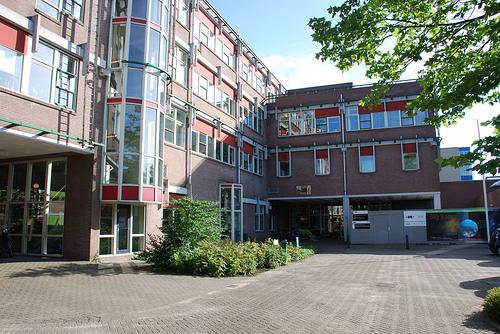| University of Amsterdam - Astronomical Institute "Anton Pannekoek" |
 |
 |
 |
 The astronomical institute "Anton Pannekoek" of the University of Amsterdam is a world leading institute in high-energy astrophysics with top-rated internationally-oriented research groups in accreting black holes and neutron stars and in gamma-ray burst research. In addition there are research groups excelling in ground-based observational techniques and the study of stars and stellar evolution, as well as planet formation. Our institute is also the seat of the Transients Key Project of the international Low-Frequency Radio Array which is currently being constructed in the Netherlands. Thus our institute has expertise with, and access, to observational facilities across the entire electromagnetic spectrum. The astronomical institute "Anton Pannekoek" of the University of Amsterdam is a world leading institute in high-energy astrophysics with top-rated internationally-oriented research groups in accreting black holes and neutron stars and in gamma-ray burst research. In addition there are research groups excelling in ground-based observational techniques and the study of stars and stellar evolution, as well as planet formation. Our institute is also the seat of the Transients Key Project of the international Low-Frequency Radio Array which is currently being constructed in the Netherlands. Thus our institute has expertise with, and access, to observational facilities across the entire electromagnetic spectrum.The Anton Pannekoek Institute participates in the National Research School for Astronomy (NOVA) of Dutch astronomy, and in particular is a node in the Dutch NOVA network on high energy astrophysics and compact object research. In the field of accretion onto compact objects in X-ray binary systems, our institute was judged as one of the top in the world by an external evaluation committee (chair: Ostriker, with Blandford, Ekers, Ellis and Radakrishnan). The High Energy Astrophysics group, in which the researchers will be based, has a particularly active and vigorous programme of research. Since 2000, members of the group have published close to 300 refereed publications, mainly in the area of X-ray binary research, so the two network funded PhD students will be immersed in a stimulating research environment from day one of the fellowship. The institute has three full professors, approximately a dozen each of permanent research staff and postdocs, and about two dozen graduate students. Approximately half of our postdoc/student population is foreign, and thus English is the main language of our institute. Beyond the weekly colloquium and more informal pizza lunch seminar, there are several student-formed study groups, and many other social activities and interactions among the young people in our institute. The institute is 20 minutes from downtown Amsterdam on the UvA science campus, also the informatics/computing technology center of the Netherlands. Starting April 2009 we will move across to the street into a brand new, state-of-the-art building where all natural sciences will be under one roof. |